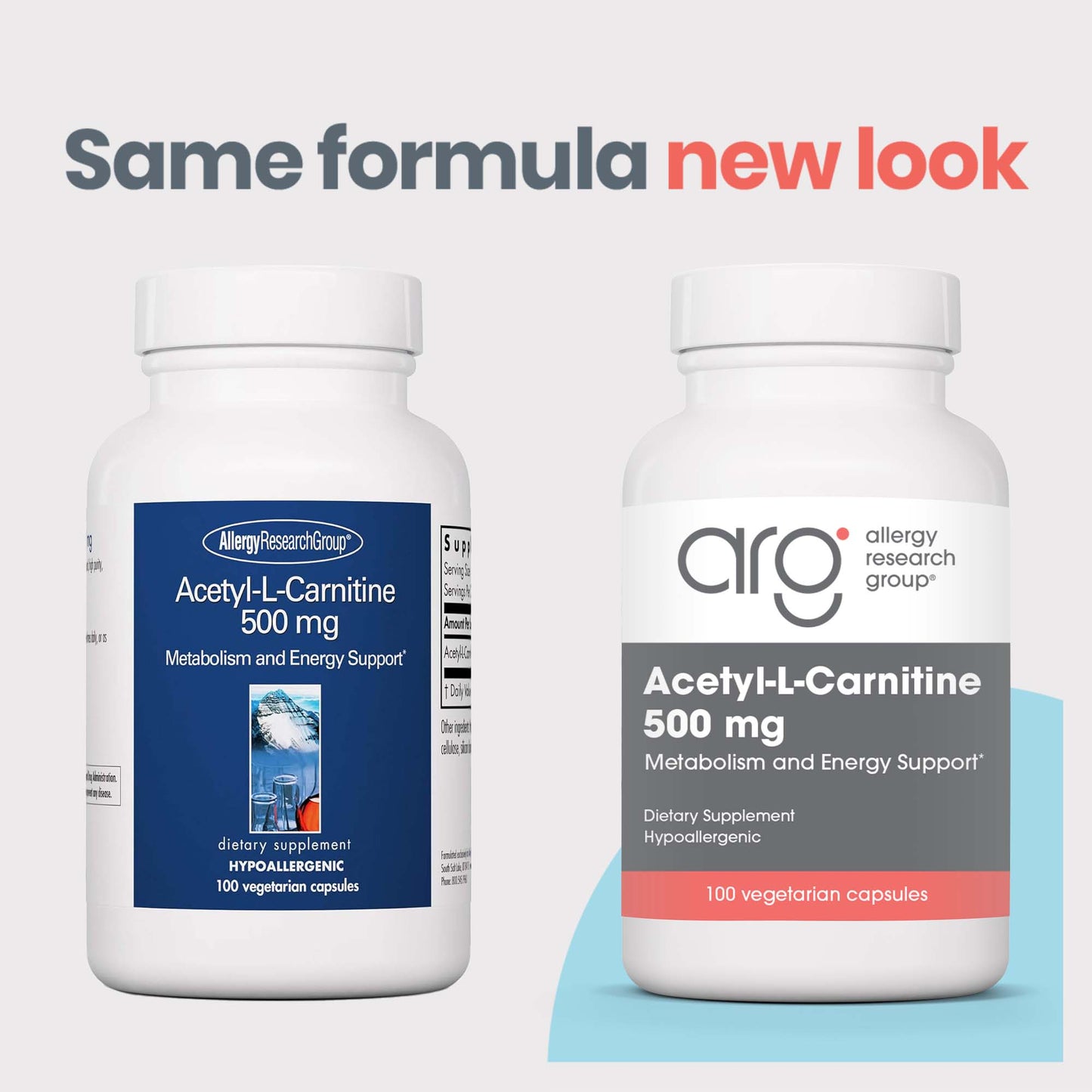Clinically Supported Cognitive, Neurological, and Mitochondrial Support with Bioavailable Acetyl-L-Carnitine*
What It Does
Acetyl-L-Carnitine (ALC) supports mitochondrial energy production, cognitive performance, nerve comfort, and mood balance.* Its ability to cross the blood-brain barrier makes ALC a valuable nutrient for neurological health and mental well-being, especially in individuals with increased metabolic or cognitive demands.*
How It Works
• Bioavailable Carnitine Form: ALC is the acetylated form of L-carnitine, facilitating mitochondrial transport of long-chain fatty acids to be used as fuel while efficiently crossing the blood-brain barrier for neurological benefits.*[1,2]
• Cognitive and Neurotransmitter Support: ALC contributes to acetylcholine synthesis, a neurotransmitter important for learning and memory, and has been shown to support cognitive function in multiple clinical trials.*[3–5]
• Nerve Health and Neuroprotection: ALC supports nerve function and neurophysiological markers, with trials showing improvements in nerve at doses of 1500 mg per day or higher.*[6,7]
• Mood and Emotional Balance: ALC may influence serotonin and dopamine pathways, and has shown positive results in clinical trials supporting mood and mental well-being.*[8–10]
• Antioxidant Activity: ALC supports glutathione and CoQ10 levels and improves oxidative stress markers, contributing to cellular protection and redox balance.*[11,12]
Who It’s For
Ideal for individuals seeking support for cognitive clarity, nerve comfort, mood, or mitochondrial energy, especially those under metabolic stress, aging populations, or those with elevated cognitive demands.*
Special Features
Each capsule provides 500 mg of highly bioavailable acetyl-L-carnitine, offering a suitable for mirroring dosage in clinical trials for brain, mood, and energy support.*
References
1. Reuter SE, Evans AM. Clin Pharmacokinet. 2012;51(9):553–572. doi:10.1007/bf0326193
2. Ferreira GC, McKenna MC. Neurochem Res. 2017;42(6):1661–1675. doi:10.1007/s11064-017-2288-7
3. Jones LL, et al. Prog Lipid Res. 2009;49(1):61–75. doi:10.1016/j.plipres.2009.08.004
4. Montgomery SA, et al. Int Clin Psychopharmacol. 2003;18(2):61–71. doi:10.1097/00004850-200303000-00001
5. Yang Y, et al. Dement Neurocogn Disord. 2018;17(1):1. doi:10.12779/dnd.2018.17.1.1
6. Li S, et al. J Diabetes Investig. 2016;7(5):777–785. doi:10.1111/jdi.12493
7. Di Stefano G, et al. J Pain Res. 2019;12:1341–1351. doi:10.2147/JPR.S190231
8. Wang SM, et al. J Psych Res. 2014;53:30–37. doi:10.1016/j.jpsychires.2014.02.005
9. Nasca C, et al. Proc Natl Acad Sci USA. 2013;110(12):4804–4809. doi:10.1073/pnas.1216100110
10. Nie LJ, et al. Front Psychiatry. 2021;12. doi:10.3389/fpsyt.2021.671151
11. Grossini E, et al. Antioxidants. 2023;12(10):1887. doi:10.3390/antiox12101887
12. Lee BJ, et al. Nutr J. 2014;13(1). doi:10.1186/1475-2891-13-79





